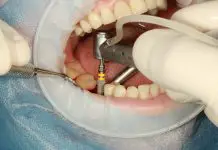Celebrities on magazine covers seem to be immaculate as they can be. Here’s a news flash for you: They are not that perfect. Or at least they don’t look half as good in person as on the Photoshop canvas.
Even so, wanting to be perfect is human nature. For many of us, acne scars are the biggest impediments to such state.
The acne in itself is momentary, but the marks and craters they leave behind are forever. Many people have contemplated suicide because of the emotional corollaries of a scar.
Wide variety of acne scar treatments
Since today isn’t the Middle Ages, you can now choose from a wide variety of acne scar treatments, running the gamut from over-the-counter medications, laser intervention to surgery.
Here are some of the most popular methods.

1. Topical creams and gels
If the acne scar is less a scar than a dark mark, know that it will fade over time, i.e. after several months. But because you know you can’t wait that long, your first line of action would be to avail of topical products sold at your nearest pharmacy.
The best ones contain such compounds as glycolic acid, kojic acid, retinol, licorice, vitamin C, vitamin A, and arbutin. These ingredients can stimulate collagen production and thereby promote skin turnover, evening out your tone.
A dermatologist can always prescribe you stronger products if wanted .
2. Chemical peels
More doses of those highly potent acids can be applied on the skin to minimize superficial acne scars in a procedure commonly known as a chemical peel.
A chemical peel is typically carried out over several sessions, the kind and amount of acid used will be the discretion of the attending dermatologist.
3. Dermal fillers
Collagen, hyaluronic acid, and other substances may be injected in your skin to fill out dents caused by acne.
Alternatively, you may elect to plump up these areas with fat from your own body: a process called autologous fat transfer.
Result? Depressed areas appear elevated, the skin surface looks smoother. However, results are not meant to last more than a year and you have to undergo the injections from time to time.
4. Lasers
Laser treatment for acne goes deeper than the foregoing treatments. It is essentially exfoliation but profounder: It uses high-energy light rather than chemicals to bring fresh layers of the skin to the fore.
The ablative kinds of laser deeply resurface the skin, i.e. burn sections of the epidermis and all the scar tissue it carries. The strangest treatments are known to entail long downtimes, the skin appearing ruddy for months on end.
A newer type of ablative laser, Fraxel, is gaining ground because of its minimal downtime. All laser treatments call for stringent aftercare since deep layers of the skin are exposed.
5. Punch excisions
‘Ice-pick’ acne scars respond favourably to punch excision. This is a surgical procedure which involves excising the scar and then suturing it in hopes of fusing the affected part of the dermis together.
Patients return after a week to have the stitch removed while procedures like chemical peels and laser resurfacing may be performed thereafter for best results.
6. Cryotherapy
Raised scar tissue may be frozen and then removed. This procedure is often performed in conjunction with intralesional injections.
The downside of this treatment is that the treated area ends up appearing paler than surrounding areas.
7. Dermabrasion
Dermabrasion is a more physical way of unravelling scar-free skin. The instrument of choice is a quite sharp, whirling electrical blade, designed to sand away at the upper layers of the skin; anaesthesia is certainly required.
A less invasive alternative would be Microdermabrasion, which as its name suggests, demand a day-long downtime no longer.
Conclusion
There is no universal treatment for acne scarring. The mode of treatment will depend on several factors, including the depth, size, type and location of the scarring; your medical history and age; and your threshold for particular chemicals, instruments, lasers, etc.
You also need to weigh the cost-effectiveness of your chosen acne treatment, a decision which your surgeon or physician can inform.
To take the edge off scarring, always practice acne therapy. Deal with breakouts as soon as they occur, as 95 percent of acne sufferers will almost certainly get scars of some sort.
If you delay acne therapy by a couple of years, your disfigurement could be a more permanent condition. Refer to a dermatologist ASAP should your acne remains unresponsive to drugstore fare.








































